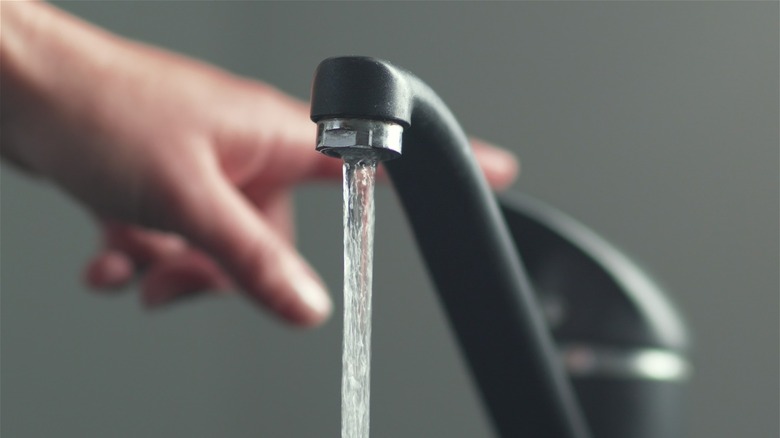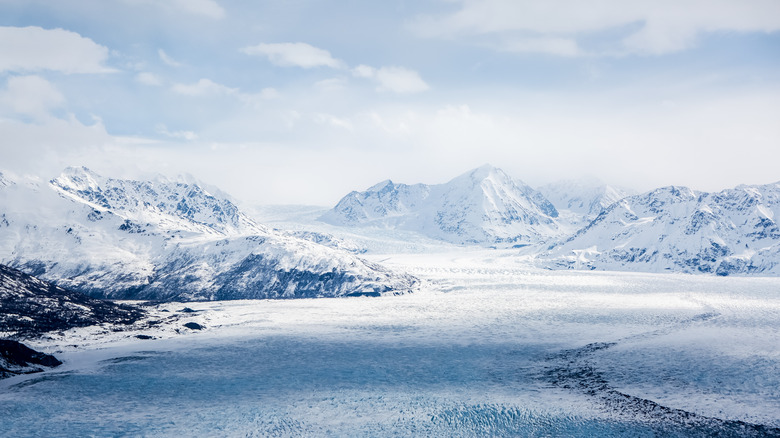The State With The Worst Drinking Water Quality In America
It's safe to say, whether you're living in a trailer, a two-story suburban house, or a high-rise apartment, that if there's one thing that we use every day in our homes; it's water. We use it to bathe, to clean, to cook, and to drink. No matter where you live in the United States, you want to live in a place that offers you clean, pure, and refreshing drinking water. Unfortunately, either by accident or mismanagement, that's not always the case.
Flint, Michigan is the most notable example of a drinking water crisis in America, as the water is contaminated with a variety of lead and toxic metals, explains NRDC. Other such cases include a recent discovery that chemicals from plastic manufacturing have found their way into the reservoirs of New Jersey's largest drinking water supplier (via Politico), and the revelation that America's drinking water may be contaminated with what are known as perfluoroalkyl substances, better known as "forever chemicals" (via Reuters). It seems that years of industrial carelessness and waste have begun to take their toll, leaving many wary of cooking or drinking with tap water.
There is one place, however, that has the worst drinking water in the United States, despite it being known for its vast tundras and beautiful, isolated wilderness.
Alaska has the worst drinking water
According to a poll on urban air and water quality in each US state via US News, Alaska was found to rank worst for water quality out of all 50 states. Upon further inspection, US News notes that Alaska has had 73 days with unhealthy air quality, with a national average of 104 days, and a national average of 2.08 drinking water violation points. For a state that the World Population Review listed as the United States' fourth least-populated, Alaska seems to have some concerning environmental problems.
Yet Groundwater Governance seems to have no major problems with Alaska. Not only do they claim that Alaska has some of the best drinking water in the United States, but that lead levels found in Alaska's water were below the 90% average. TapSafe's report on Anchorage's drinking water also claims that the water is safe to drink, although does remind readers that even though the water is acceptable to the standards of the Environmental Protection Agency, that doesn't mean the water is necessarily healthy. Keep in mind that the "acceptable levels of lead" in our drinking water issued by the EPA is "a weighted average of 0.25%."
This isn't to say the water here in the United States is poor quality or unsafe to drink. If you feel like sticking to bottled water after this, however, perhaps you should read what the real difference between tap and bottled water is.

